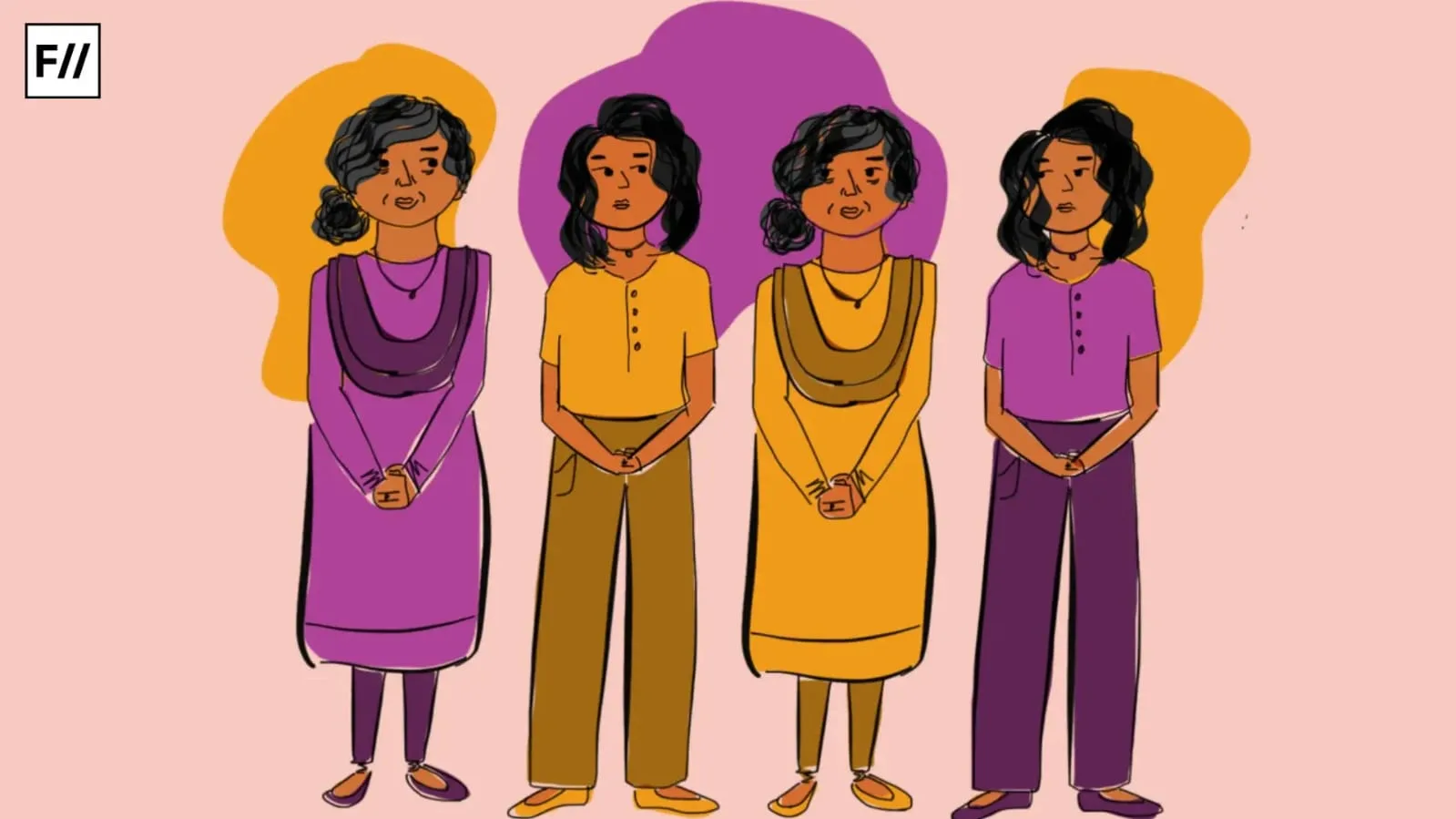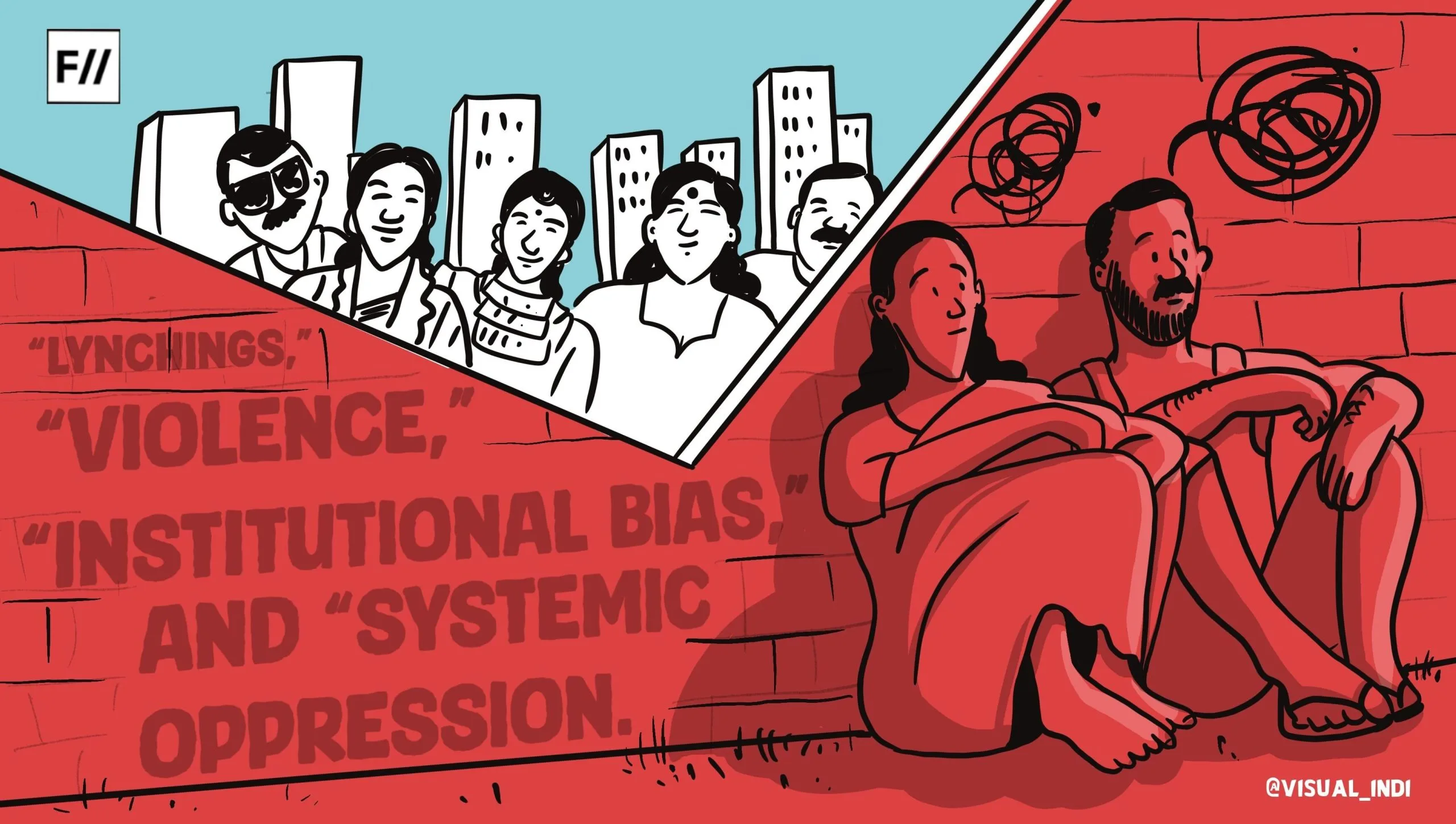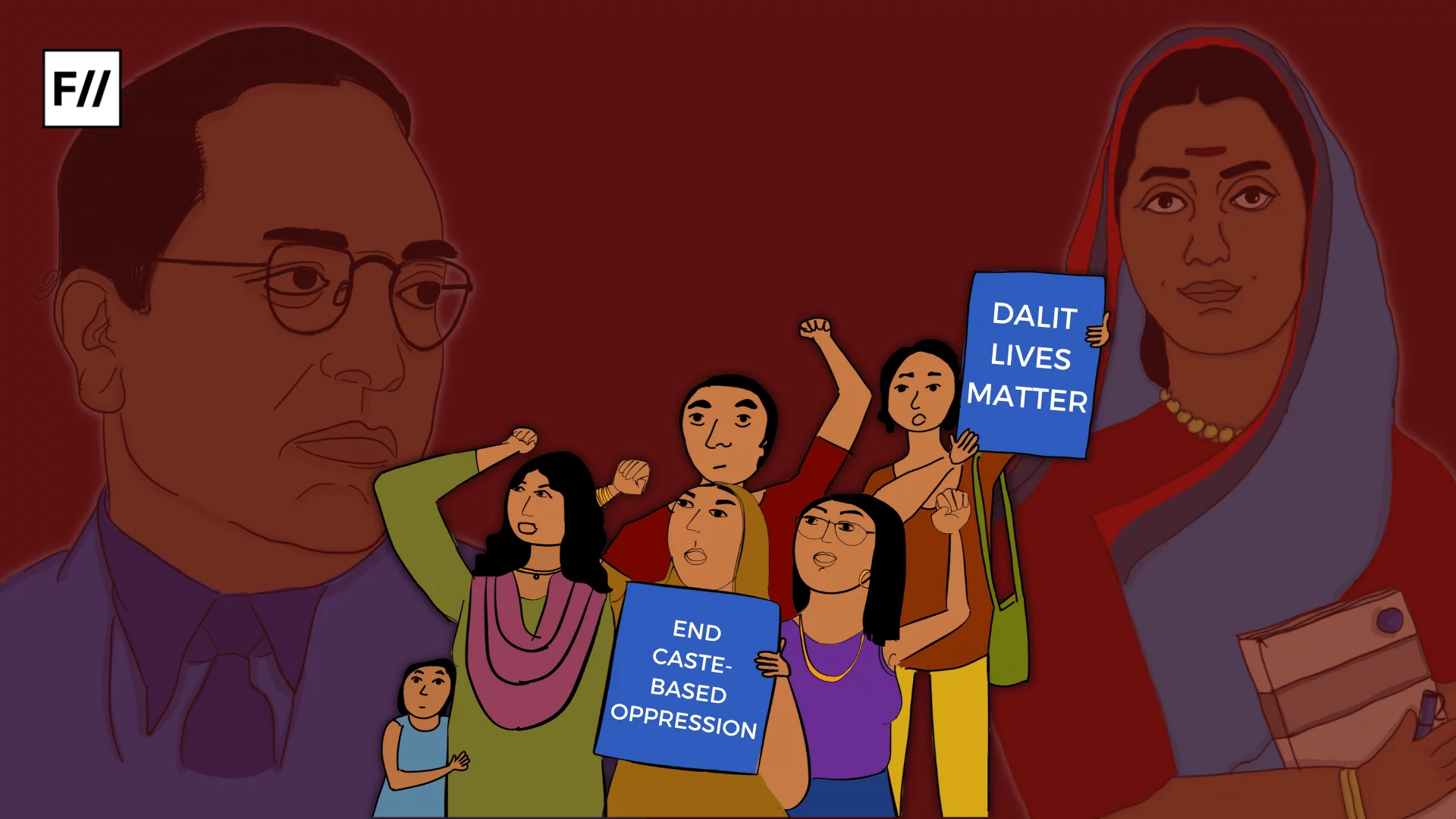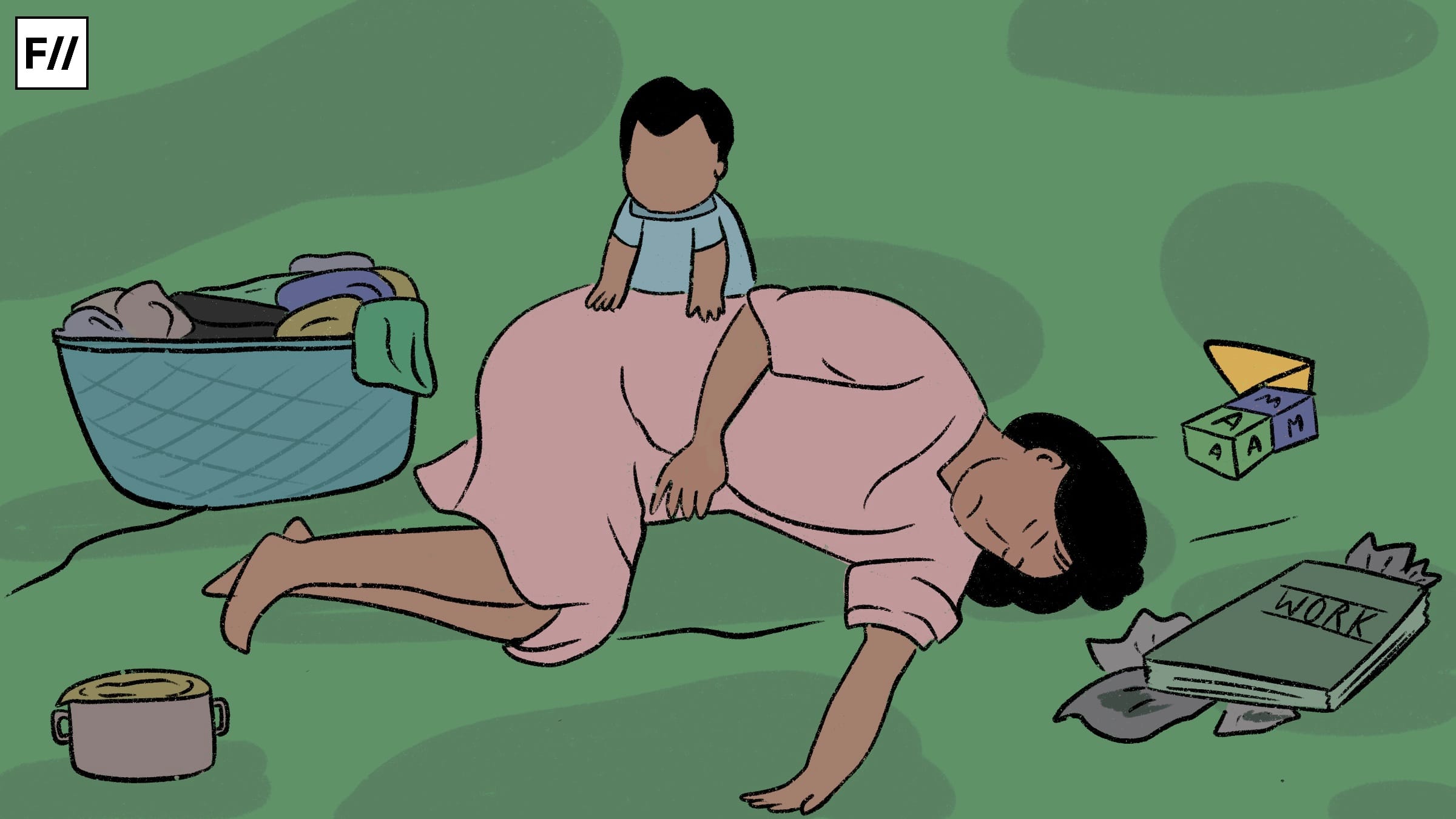It was the hot month of June when my mother first started showing symptoms of arthritis in her right hand. She couldn’t hold the broom or make rotis, as her grip was loosening, and it was difficult for her to move her fingers. Despite all this, she didn’t stop doing household chores, not because she wanted to but mostly because she did not know she could stop. For thousands of women like my mother, who, even in their old age, rest is still a luxury in the rigid caste-patriarchal structure they live within, which has been internalised so strongly that they either are too afraid to break due to consequences or perhaps don’t know any other way of surviving.
It took us six months to detect the disease. You may ask why. Part of it was because we couldn’t figure out where to go – orthopaedic, neurophysician, homoeopathic, or ayurvedic? But if I am being honest with myself, I wasn’t active or involved enough in her treatment because I couldn’t see her pain. Why? Because she didn’t tell me, and I didn’t see it. This silence was not personal; it was systemic. As a family, we never learned how to truly see women’s pain until it screamed.
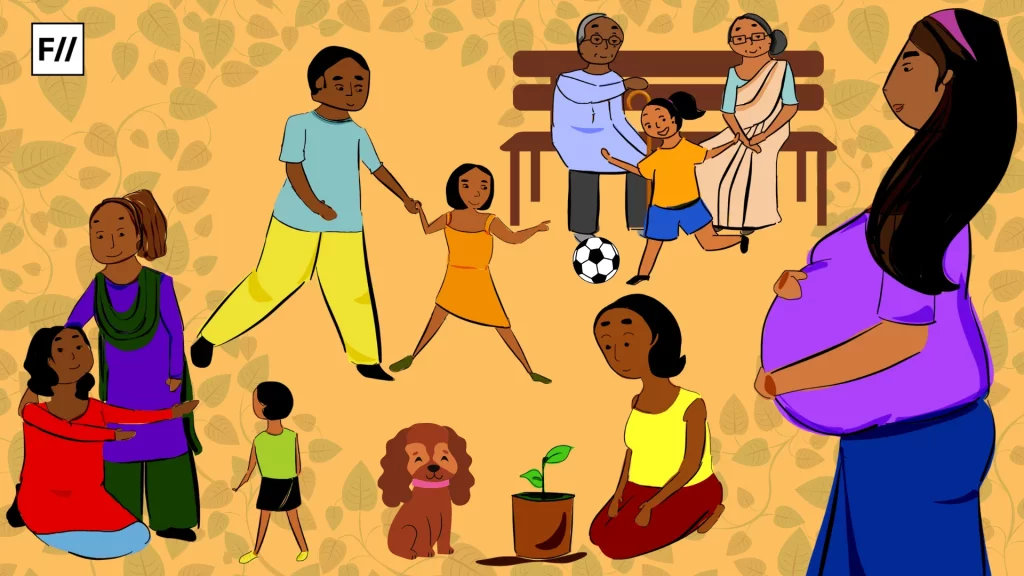
Recently, I learned that diverse stressors may increase the risk of developing probable autoimmune diseases like arthritis in women. Even though the doctor said it was because of age, I know my mother’s arthritis is rooted in the stress she has carried all her life – and still does. Growing up, I was only familiar with two emotions of my mother: anger and tears. Her tears often turned into anger, which she almost always took out on her children. So, I grew up only knowing an angry mother. Because of that, for a large part of my life, I never loved her as a son should. Even now, I am frightened by anger, regardless of who it comes from. That’s the first thing I remember inheriting from her – the fear.
Anger as a form of resistance and survival
When I grew up, I often wondered: why was she always angry? How come I don’t remember a loving mother? That anger was not hers. She always wanted to love her children, but she was so occupied with surviving within the caste and patriarchal structure forced upon her that she never had the space to love freely. Half of her life was spent in a joint family of ten people in a 2BHK house, as the choti bahu. To survive in a family which denied any space, anger was the only weapon she had – a weapon that I and society at large often labelled as that of a “hysterical woman”. Her anger was her only weapon – the one she inherited from her resistance against personal trauma. Before mental health professionals could reach her, she relied on her own form of resistance to take care of her mental well-being for her everyday survival.
To survive in a family which denied any space, anger was the only weapon she had – a weapon that I and society at large often labelled as that of a “hysterical woman”. Her anger was her only weapon – the one she inherited from her resistance against personal trauma.
Joint family was traumatic for her. She never loved living there because, in that 600-sq. ft. space, she couldn’t belong to any corner of the house. She never accepted a single brick of that house, nor did that house ever accept her. All because she didn’t have a choice, which is directly associated with her dignity.
Later in life, I realised that choice is central to my mother’s mental health – the choice not to cook, the choice to speak out against inappropriate behaviour of men of the family, the choice to go for a walk, or the choice to sleep during the day. Not having agency affects her mental health even today, which manifests in the form of sleepless nights, pain in different body parts, fever, etc. She has fought all her life – with her angry self – for the right to choose, for herself and for her children. Mostly, she failed. Rarely, she succeeded.
This fight has now resulted in our separation from the joint family, in her arthritis and in her being labelled as a home wrecker. Having a choice was never just about taking space or getting things done her way; it was about making sense of her own identity and self. Every time my father or elders in the family shut her down and denied her the right to choose, she lost a little part of herself and slid into the patriarchal structure even more and eventually became the carrier of patriarchy which was forced upon her.
Tears, mother and small resistances
Whenever my mother cried in front of us, her tears were always about something her children did – something that embarrassed the family or disrupted the status quo. But those tears were not just for her children. They were her only outlet, her only way to feel a moment of relief. She was never allowed to cry for her own pain, because for women like her, those were not “issues”—that was simply life. A life she saw her mother, her sisters, and every other woman around her living.
This silence was not personal; it was systemic. As a family, we never learned how to truly see women’s pain until it screamed.
As Michel Foucault said in his essay The History of Sexuality (1976), “Where there is power, there is resistance.” Hence, the resistance of women like my mother also comes from inside these power relations in their everyday acts of negotiations and survival. In the face of despair, women find small things to call their own – be it sewing, knitting, or gossiping. For my mother it was her two-decades-old sewing machine, which is not in use, but she refuses to discard it. It was a source of income once, yes, but more importantly, it was her private space, a way to distance herself from the world and do something that was truly her own.
One of my neighbour’s aunties, for instance, spent her afternoons visiting homes, talking to women, and sharing and collecting updates about their lives. She was often labelled as the “gharghushi” (Marathi word for someone who pokes their nose in everyone’s business). But for her, those conversations were a lifeline – a way to take care of her mental well-being and the only space to vent and feel relaxed.
Community care and feminist resistances of mothers
Current mental health care discourse proposes universal care across the population, which primarily relies on biomedical care and diagnostic criteria that are built on western concepts and understanding of mental health. It is not always pertinent for a country like India, which is so diverse in socio-cultural and economic context. Hence, recognising and acknowledging such coping mechanisms of women and rooting mental health care in the community is important to cater to the mental well-being of thousands of women like my mother in India. This has been proven beneficial in the case of Prof. Chibanda and many grandmothers’ friendship bench intervention in Zimbabwe, where grandmothers who are trained in the basics of counselling sit outdoors under a tree and talk to persons in distress. Friendship benches might be one of the most popular and documented community mental health care interventions, but Indian women, specifically dalit and Bahujan women living in bastis (ghettos), have their own form of friendship bench. In the afternoon when men go to work, women sit in front of their own houses or gather in someone’s house with vegetables to cut, grains to be cleaned or wool to be knitted and talk to each other about their daily lives and their issues and provide their own solutions and support to each other stemming from their lived experiences. Women have their own vocabulary for mental health and forms of care. The current expert-led discourse often fails to recognise and value these. Yet, they are vital for thousands of women who navigate daily life and mental well-being through these quiet, self-created practices.
Women’s resistance is often seen as a linear process. The history of feminist movements is understood as a mass of women rallying in the streets and taking collective action. However, women like my mother negotiate family respectability while also transgressing caste-gender norms. They cannot be neatly categorised into binaries, neither conformists nor rebels. Rather, they live in moments of both conformity and rebellion. (Kamal Danika, Feminisms of our Mother, 2024, pg. no. 39). These resistances are not just their way of claiming their space and rights, but they are also their way of taking care of their mental well-being, as it is intrinsically linked with their rights and dignity.
